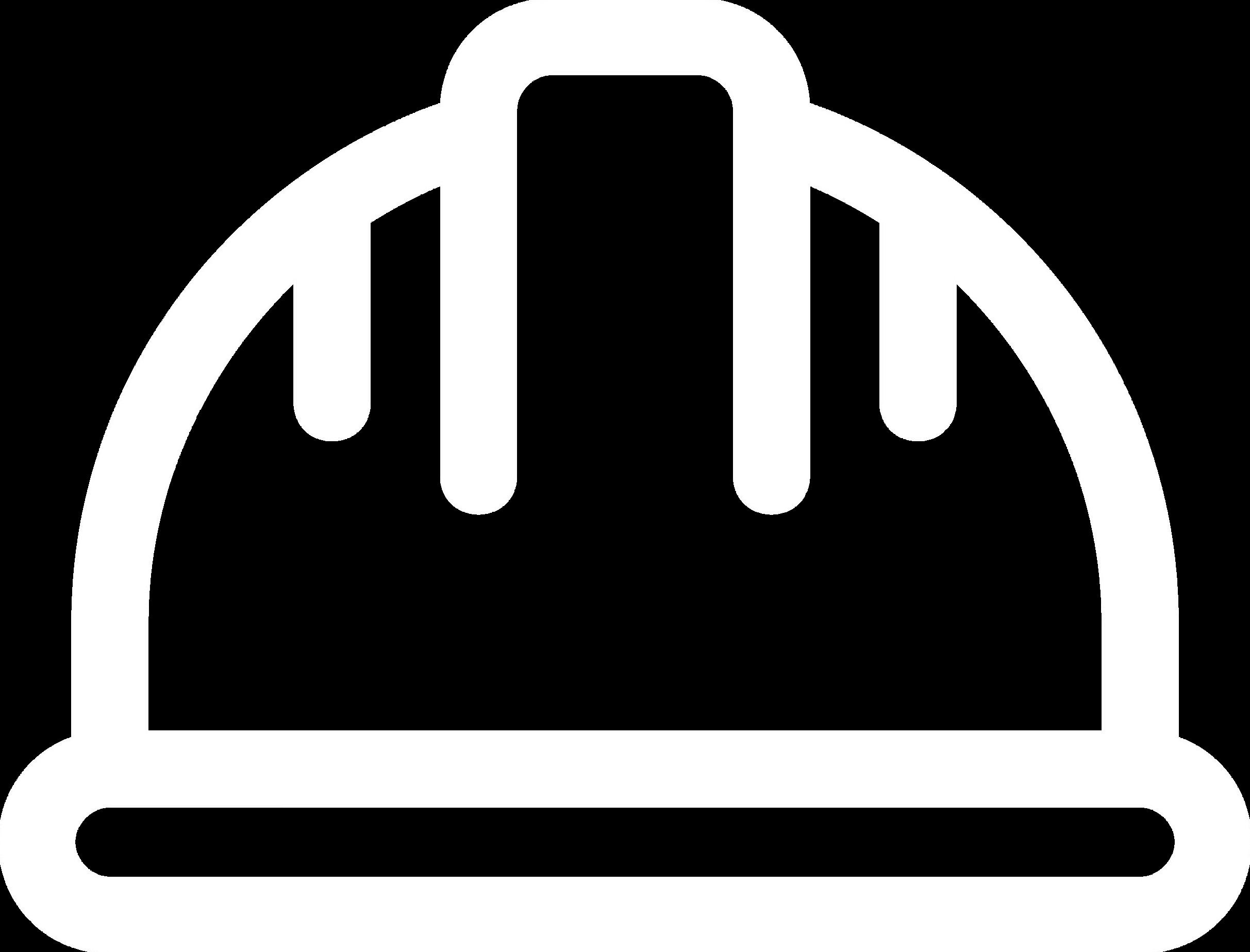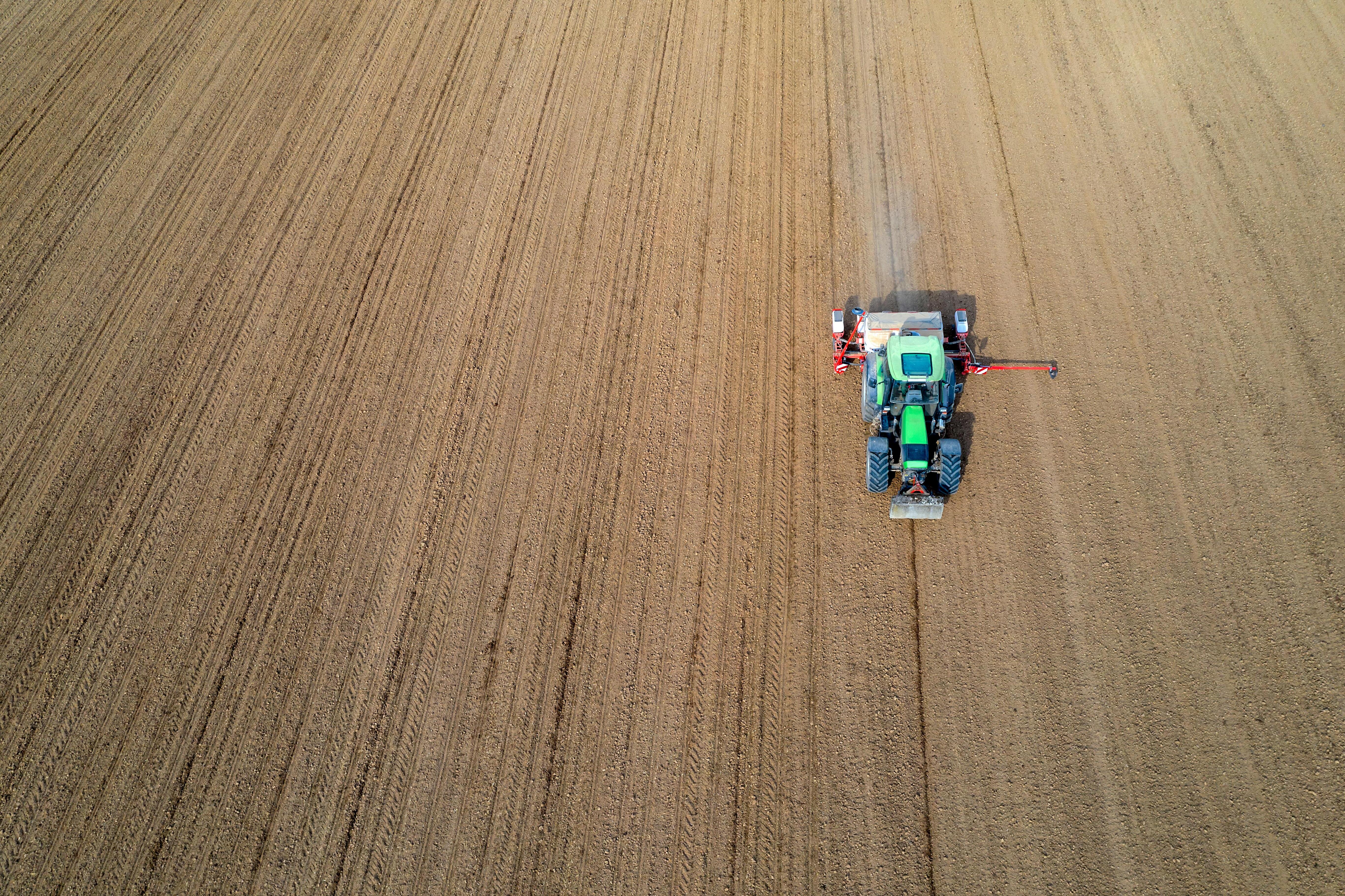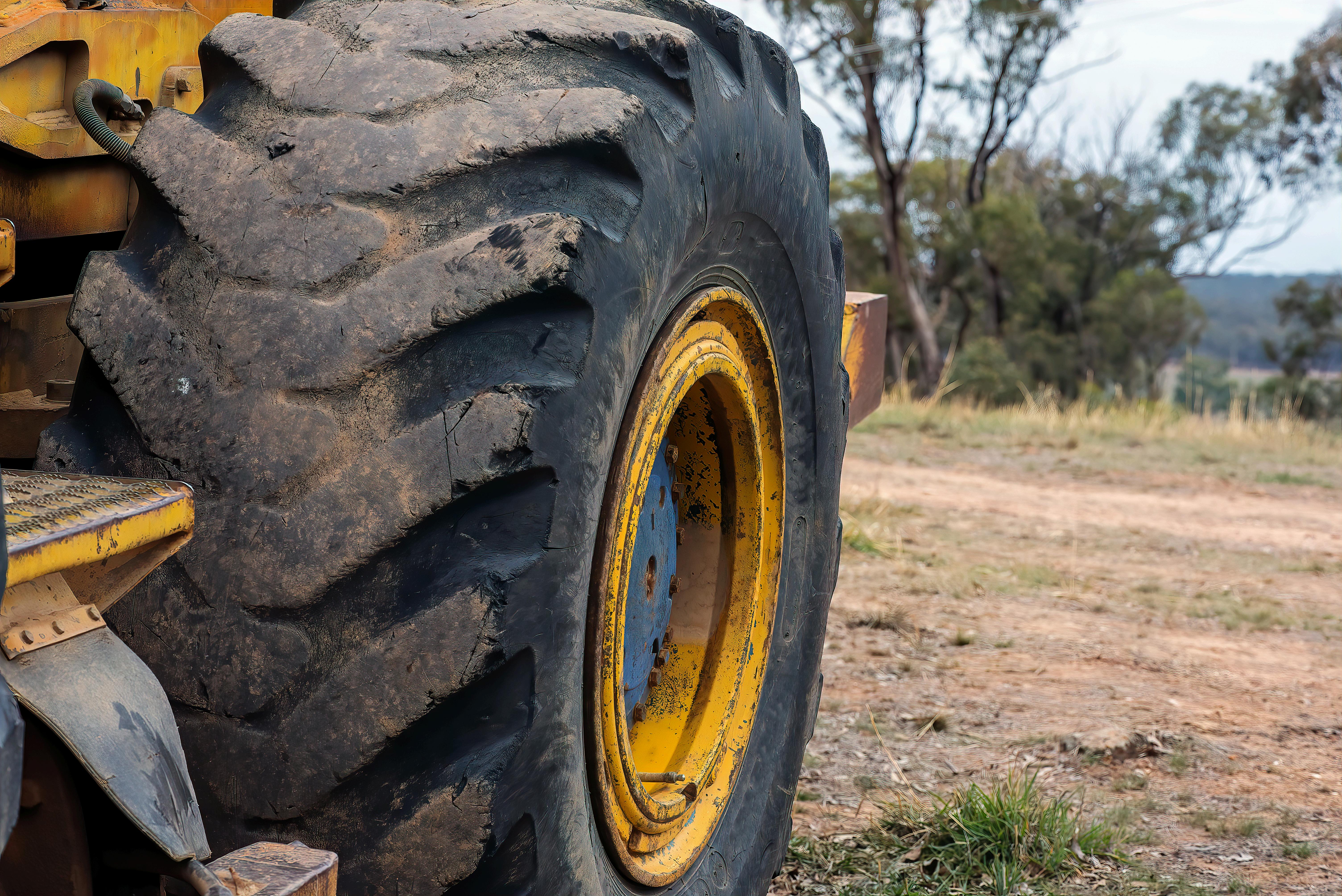HEALTH&SAFETY BULLETIN








Welcome to Ceres Rural’s Health & Safety Bulletin. Each quarter, we update you on industry news, topical issues, and safety alerts with the aim of supporting you in achieving best practice on your farm or estate. This edition explains the most common hazards and respective control measures for the safe operation of silage clamps and outlines the important purposes of electrical fixed wire testing with remarks on the frequency and practicalities of implementing this on farms and estates. It provides a reminder of the importance but dangers of using power take-offs (PTOs) and highlights a number of key safety parameters. The bulletin also examines the do’s and don’ts of safe tyre inflation, and details some of the hazards and key considerations associated with confined spaces in agriculture. It concludes by referencing Lantra’s recent decision to make it’s suite of Farm Safety E-Learning Courses freely available.
As the silage making season begins, it is worth remembering that silage clamps pose significant health and safety risks that necessitate careful management. Key legislation includes the Health & Safety at Work etc. Act 1974 which requires employers to ensure, so far as is reasonably practicable, the health, safety and welfare at work of employees, including when filling and emptying silage clamps; the Work at Height Regulations 2005 which require a hierarchy of control measures to ensure safety when working at height on silage clamps; and the Control of Pollution (Silage, Slurry & Agricultural Fuel Oil) (SSAFO) Regulations 1991 which apply to new or significantly altered clamps built since March 1991 and are designed to prevent pollution and ensure that silage clamps meet stringent environmental standards.
The most common hazards associated with silage clamps together with their respective key control measures are detailed overleaf. By addressing these key areas, the risks associated with silage clamp operations can be significantly reduced.

FALLSFROMHEIGHT
These are possible when accessing the top of silage clamps which can often exceed three metres in height, installing or removing covers, or working close to clamp edges. Safety rails should be installed on clamp walls, with the top rail 1,100mm above the wall and intermediate rails no more than 470mm apart. Open clamps with earth embankments should have sides and ends sloped at a safe angle of less than 45 degrees. Clamps should never be filled above the wall height, as this renders guard rails ineffective. Avoid lone working and installing or removing covers in challenging weather conditions. Use correct lifting techniques to prevent strain or accidents when handling covers. Use appropriate PPE and footwear, communicate effectively and use long handled tools to avoid working at clamp edges.
GASHAZARDS
Oxygen depletion and accumulation of dangerous gases including nitrogen dioxide, carbon dioxide and carbon monoxide under the sheeting and around clamp edges, which can cause permanent throat and lung damage or asphyxiation. Never crawl underneath covers due to the fermenting grass using up the available oxygen and levels of harmful gases increasing rapidly.
STRUCTURALINSTABILITY
Cracks in floors and wall joints compromising clamp integrity, and poor storage structures resulting in instability or collapse. Regularly inspect clamps for visual signs of deterioration or damage.
MACHINERYACCIDENTS
Overturn when overfilling clamps or working at heights, collision with pedestrians when filling and compacting clamps, or burial when removing silage. Ensure workers are trained and competent in the safe operation of machinery and check that lights, beacons, mirrors and reversing alarms are in working order. Keep pedestrians well away from clamps and require them to wear high visibility clothing to increase the likelihood of them being seen by operators.
ENVIRONMENTALHAZARDS
Silage effluent – which has a biochemical oxygen demand (BOD) of up to 200 times that of raw sewage – entering and damaging watercourses, and silage clamp leachate having an aggressive acidity and being similarly environmentally harmful. Ensure appropriate drainage and collection systems are in place to capture and manage effluent and leachate.
Electrical fixed wire testing – also known as an Electrical Installation Condition Report (EICR) – assesses key components of electrical systems including wiring and circuits, consumer units and fuse boxes, protective bonding and earthing, lighting, switches, sockets, distribution boards, and permanently installed equipment, and serves several important purposes including:
Legal compliance: to help farms and estates meet their obligations under the Electricity at Work Regulations 1989.
Compliance verification: to determine whether the electrical installation complies with the IET Wiring Regulations BS7671:2018.
Safety assessment: to evaluate the safety of the existing electrical installation.
Issue identification: to highlight any damage to components, deterioration of the electrical system, defects or potential risks of electric shocks or electrocution.
Improvement recommendations: to list any necessary remedial work, helping farms and estates to plan and prioritise work accordingly.
Working environment: to produce a safe working environment for workers, contractors and visitors, where electrical systems are routinely tested.
Cost savings: reducing costs associated with unplanned downtime and system failure, and by addressing minor issues as early as possible.
Documentation: to provide a formal record of the installation's condition at the time of inspection.
Insurance validity: to ensure that insurance policies remain valid and cannot have cover declined or claims rejected due to testing not being completed.



EICRs should be carried out by a qualified and competent person, generally a registered electrician demonstrating thorough knowledge and understanding of the Health & Safety at Work etc. Act 1974, the Electricity at Work Regulations 1989, and the IET Wiring Regulations BS7671:2018.
The frequency of testing is determined by the type of installation, how often it is used, and the external influences or environment to which the electrical installation is exposed. For agriculture (identified as a
moderately high-risk industry) testing every three years is recommended. This requires farms and estates to plan and budget appropriately: for example, smaller farms may have an EICR carried out on the entire holding once every three years; whereas larger estates may have a rolling three year testing programme, to make the logistics more manageable and to spread the cost in the cash flow Furthermore, diversified rural businesses operating facilities such as swimming pools or saunas, should note that these require testing on an annual basis.
PTOs are crucial components in farm and estate machinery, transferring power from tractors to various implements. However, every year people are seriously injured in accidents involving PTOs and resulting in severe fractures, lacerations or amputations. These occur almost instantly: a PTO operating at 1,000 revolutions per minute is rotating at 17 revolutions per second and with human reaction time of quarter of a second at best (and often, longer) the consequences are starkly apparent.
The Health & Safety Executive (HSE) comment that: “Most of these accidents are preventable if the PTO and PTO drive shaft are fitted with guards of good design which are properly used and maintained. Broken, damaged or badly fitting guards can be just as dangerous as no guard at all.”
Key safety considerations for the use of PTOs include:
Guarding and shielding: ensure that PTO shafts are equipped with proper guards or shields that cover the rotating components to prevent entanglement and injuries from exposed parts. Regularly inspect these guards to confirm they are intact and properly secured, adhering to recognised safety standards
Clothing and personal safety: operators should wear snug fitting clothing and tie long hair back to avoid entanglement. Loose clothing, long and loose hair, jewellery and long shoelaces should be avoided while working near PTOs.
Operational precautions: always disengage the PTO and Safe Stop (controls in neutral, handbrake on, engine off and key out) before performing maintenance or clearing blockages, to prevent accidental or unexpected reactivation while working on or near the equipment. Never step over a PTO shaft; instead, walk around the machine to minimise the risk of contact with moving parts.
Training and awareness: proper training for operators is essential, including understanding how to operate PTOs safely and recognising potential hazards. There are plenty of videos on YouTube and other online resources reinforcing the key messages around PTO safety
Maintenance: regular checks should be performed on PTOs to ensure they are functioning correctly, including lubrication and checking for wear and tear on components.
Emergency procedures: operators should be familiar with emergency stop mechanisms and have clear procedures for responding to accidents and emergencies.


For further information, see: https://www.hse.gov.uk/pubns/ais40.pdf
Removal, replacement and inflation of vehicle and machinery tyres is extremely common in agriculture, so it may seem like a simple task. However, injuries and deaths can result from manual handling of tyres, collapse of elevated vehicles and machinery, and tyre explosion or disintegration during inflation.
In May 2021, a 23-year-old farm worker from Hutton in Lancashire sustained serious head injuries when a tractor tyre exploded during inflation – he died of his injuries more than a month after the accident. At the inquest, the HSE described how their investigation found no evidence of a risk assessment being carried out, that the victim must have been stood within the trajectory zone, and that restraints (if used) would have prevented the tyre from launching from the ground, flipping and impacting the victim.
Inflating and inflated tyres contain a large amount of stored energy (for example, the sidewall of a typical commercial vehicle tyre has over 34 tonnes of force acting on it) which they are designed to withstand but if damaged, may fail. The force can then be released explosively at an angle of up to 45 degrees from the rupture (which is often, but not always, the face of the sidewall), resulting in a destructive air blast, ejection of high-speed particles, and, if not restrained, the wheel flying metres through the air.



In order to safely inflate tyres on farm and estate vehicles and machinery:
DO use a clip-on chuck to connect the airline with a quick-release coupling at the operator’s end to allow for tyre deflation from a safe position if a problem occurs.
DO use a strong firmly secured mesh lined tyre inflation cage, secured horizontal stool and associated clamping mechanism, or portable restraint.
DO use airline hoses long enough to allow the operator to stay outside of the likely explosion trajectory zone during inflation.
DO NOT use valve connectors that require the operator to hold them in place.

DO use enough bead lubricant when seating the tyre Consider removing the valve core or using a ‘bead blaster’ if seating is difficult.
DO remove the airline after use to prevent air seepage and possible over-inflation
DO NOT stand within the trajectory zone of any potential explosion while inflating tyres.
DO NOT exceed the manufacturer’s recommended tyre pressure for the size and rating of the tyre.
DO NOT use ‘unrestricted’ airlines without a gauge or pressure control device
DO NOT allow the control valve to be jammed open which could result in the operator leaving the inflating tyre unattended.
For further information, see: https://www.hse.gov.uk/pubns/indg433.pdf

Many farms and estates have confined spaces with the potential for serious health and safety hazards to workers. Examples include intake and elevator pits, grain dryers, storage bins and silos, slurry and manure tanks, feed mixers and grinders, fermentation vessels, bulk liquid storage tanks, fuel storage tanks, forage wagons, sumps and tunnels.
Relevant legislation includes the Health & Safety at Work etc. Act 1974; the Management of Health & Safety at Work Regulations 1999 (MHSWR); the Personal Protective Equipment at Work Regulations 2002 (PPER); and the Control of Substances Hazardous to Health Regulations 2002 (COSHH). Furthermore, the Confined Spaces Regulations 1997 define confined spaces and specify the associated risks, prohibit entry into confined spaces unless necessary, require a safe system of work for confined space entry, and mandate adequate emergency arrangements for rescue
Managing the risks of confined spaces involves understanding the hazards including:
Oxygen deficiency: low oxygen levels cannot be detected by sight or smell but can cause loss of consciousness, brain damage or death.
Oxygen enrichment: high oxygen levels can increase fire and explosion risks.
Toxic gases: accumulations of harmful gases like methane, ammonia, hydrogen sulphide, carbon dioxide, and carbon monoxide can pose serious health risks.
Explosive atmospheres: these can form due to combustible dusts, vapours, or flammable gases. Grain and wood dusts may also explode when there is a sufficient concentration in the air.
Entrapment and engulfment: workers can be trapped or buried in grain or compost – bins and silos are especially dangerous in this regard.
Mechanical hazards: equipment such as augers, mixers or rotating tanks can cause impact, crush or entanglement injuries if not isolated, locked out and deenergised.

Biological hazards: enclosed or poorly ventilated spaces can be subject to bacteria, mould spores and allergens from stored organic matter, causing respiratory issues or allergic reactions.
Electrical hazards: electric shock or electrocution can result from defective fixed or portable equipment. Work done in metal enclosures or wet conditions can be particularly dangerous, as can electrostatic arcs igniting dust in dry conditions.
Substances entering through piping: pipes connected to or entering confined spaces may contain liquids, gases or other harmful substances that can cause asphyxiation, burns, drowning, trapping, crushing or burying.
Temperature extremes: high temperatures can lead to heat stress while low temperatures can cause cold stress or hypothermia
Noise: noise is exacerbated when it reflects off walls and can cause ear damage and hearing loss.
Drowning: liquids in tanks or pits pose a drowning risk.
Emergency response challenges: the physical layout of confined spaces can complicate rescue efforts in emergencies, making it vital for workers to have a clear emergency plan in place before entering.
Many of these hazards are often not immediately apparent, making confined spaces in agriculture particularly dangerous.
To mitigate these hazards, key considerations should be made, which are detailed overleaf.
Avoid entering: modify the confined space so entry is not necessary or so that work can be done from outside, such as clearing silo blockages using remotely operated rotating flail devices, vibrators or air purgers.
Safety equipment: use personal protective equipment including respiratory protection, protective clothing, and safety footwear.
Fall protection systems: use harnesses, tripods, davit arms, and other fall arrest equipment to prevent falls during entry and exit.
Air monitoring equipment: employ gas detectors or 4-gas meters to test for oxygen levels, flammable gases, carbon monoxide, and hydrogen sulphide before and during entry.
Natural ventilation: allow confined spaces to naturally ventilate for a prolonged period of time prior to and during entry.
Artificial ventilation: use equipment to ensure proper air circulation and remove potentially hazardous atmospheres.
Communication devices: have two-way radios or phones to maintain contact with workers outside the confined space.
Lighting: ensure there is adequate and suitable lighting for navigating the confined space safely.
Rescue equipment: have winches, lifelines, and extraction devices for emergency situations ready and ensure workers are trained prior to entry.
Entry and exit equipment: use ladders, platforms, and manhole guards for safe access.
Signage and barriers: display signs warning of confined spaces and prohibiting unauthorised access.
Lockout/tagout equipment: isolate machinery and prevent accidental start-up during confined space work
Remember, all equipment must be properly maintained, regularly inspected, and used correctly to ensure worker safety in confined spaces on farms.
For further information, see: https://www.hse.gov.uk/confinedspace

Lantra has made it’s suite of Farm Safety E-Learning Courses freely available, with the aim of reducing the number of accidents on farms and estates. Following the news of the HSE’s decision to move away from routine farm safety inspections and recognising the importance of training and keeping knowledge of farm safety timely, the resources below are now free to access:
Agriculture Health & Safety: How to Meet your Legal Responsibilities
Agriculture Health & Safety: How do I Manage Health?
For further information, see: www.lantra.co.uk/news-events/farm-safety-e-learning-courses-now-free-of-charge


If you would like to discuss any topics raised in this issue of the Health & Safety Bulletin, do not hesitate to contact our Health & Safety Guidance expert.

ROBERT
GAZELY PARTNER|SAFFRONWALDEN
robert.gazely@ceresrural.co.uk 07592 041 617
